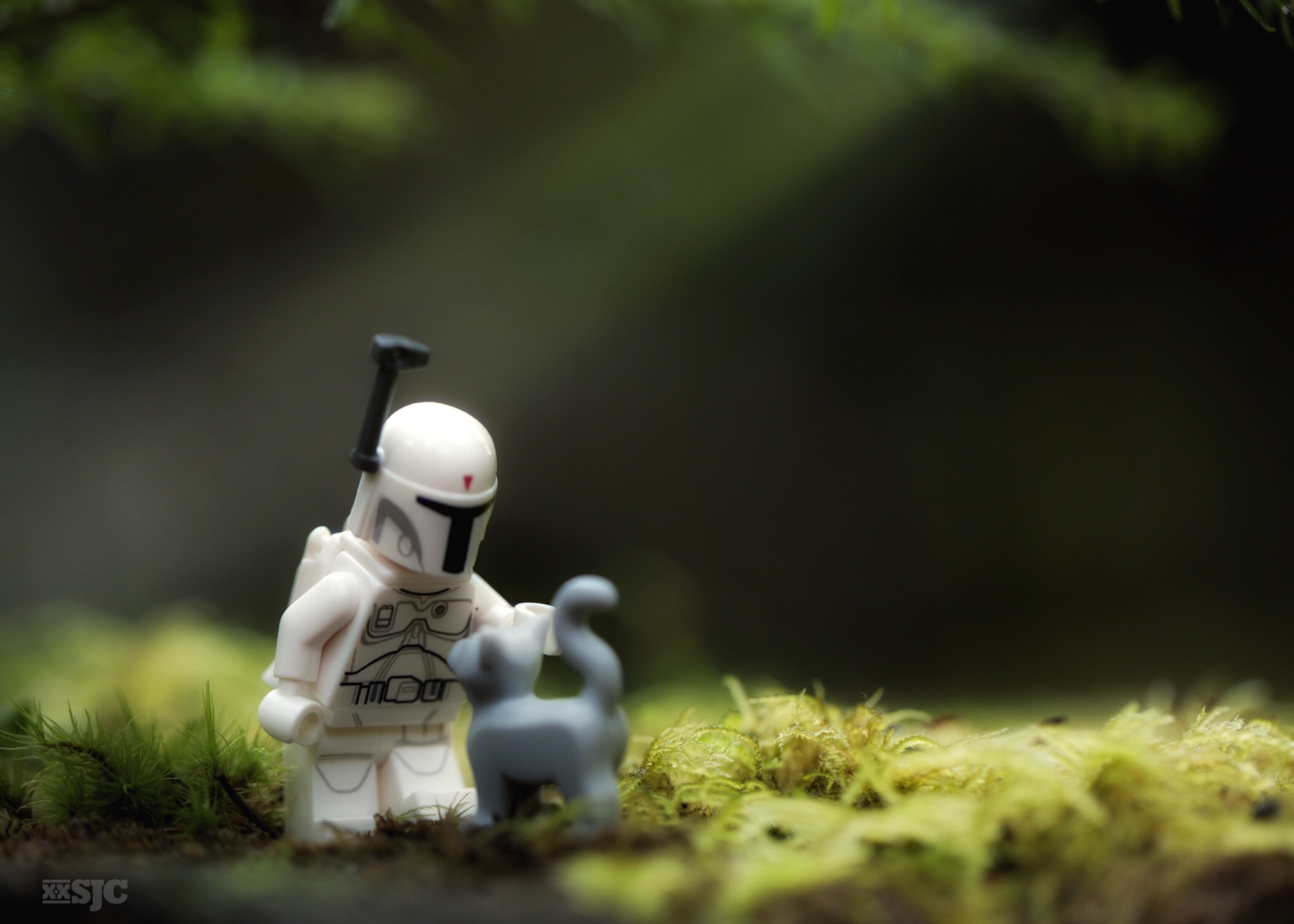‘Leading lines’ is one of the tricks photographers use to organize their composition to create a stronger visual impact. Leading lines are simple visual cues that help guide the viewer’s eyes around the photo and towards (or away) from the main subject.

The line of bokeh leads the viewers gaze in the same direction that Laval is walking. Whenever I look at this image, I wonder where he’s going on such a beautiful evening. Notice the strong feeling of depth these lines give the image?
When we think of leading lines we often think of the typical shot of railroad tracks moving towards the horizon line. This is a classic trick to draw the viewer into the image. But ‘leading lines’ can be so much more. These lines create movement and a sense of depth in an other wise still and flat image. Leading lines can be as direct as those quintessential railroad tracks or as subtle as shadow play. In macro photography they can be a line in the sand or the grain in a piece of wood.

I love how the lines on this piece of wood act as a road in to and out of the image. They create a strong visual depth, all the way from the back of the image to outside the picture frame. I wonder where those Swamp Monsters are headed?
When you set up your photo look at your surroundings and see if you can identify strong lines that can to direct your viewers attention to the subject. These lines can be anything: a blade of grass, sticks, fence posts, tree branches or the curve of a water line. When you’re looking for potential photo locations look for patterns, light and dark, or elements that have a strong sense of direction and utilize them to give your photograph a sense of movement.

With the mini figure nestled into the depression left by the line of rocks your eye can’t help but be drawn to the improbably image of a Chima riding a Tauntaun. The slop of the rocks echo the slope of the back of the Tauntaun creating a nice double curved line I find reinforces the effect of the leading lines and brings the background and the subject onto one visual plane.
Leading lines works as effectively in a studio as outdoors. You can use props to direct the viewers gaze from the edge of the image to the subject. Or you can use lighting to create light and dark areas that will produce that same feeling of visual movement.

The strong line of the rock begs to be ridden down by Li’Ella. As my eye travels down the rocks slope it picks up speed, much as the skateboard would do on its own exciting ride. The background foliage echoes the strong vertical lines adding to the sense of motion.
A strong composition is the foundation of any great photograph. Leading lines is just one of several tricks photographers have been using for years to create dynamic photographs. The next time you set up a photo, look for those leading lines and start playing with this classic photography compositional tool. I certainly hope you have as much fun looking for them as I do!
~ xxSJC
I love it when you share your work with me. If you have an image your proud of, that shows the use of leading lines, leave a link in the comments so we can learn from each other.









Great post Shelly! Thanks.
Thanks Brett, you are too kind!
Putting the SIC back in basic!
What does SIC mean?
Plus you have to start somewhere. 🙂
‘SIC’ like, that’s sick, meaning it’s awesome. So, baSIC, meaning you are making the basics awesome.
Basic is good. One of these days, I’d like to see you make a book of this, and that’s who your audience will be. Really, kids starting out with toy photography and their parents and teachers will appreciate these basic how-to posts.
Thanks Lyn, I may do that some day. These concept may seem like they are basic, but when you scroll through any tag in the toy community, most people don’t use them. We can all use a refresher course on the fundamentals of photography – especially me!
Such a great post! Your use of leading lines is so wonderful, definitely inspiring.
In glancing through my own feed I realized how little I utilize this principle in my toy photos, even though I’ve been aware of it as a photographer in general. I’m going to try to incorporate it more deliberately now. 🙂
But I did find a few:
https://www.instagram.com/p/BGSzgjNNWWF/
https://www.instagram.com/p/8hJj03tWdm/
https://www.instagram.com/p/1bBi25NWfL/
Leila, Thank you for your kind words. Its easy to look good when you cherry pick images for a blog post. I certainly don’t use this technique in all my images. The examples you posted below are all fabulous! I remember them all vividly. One thing I’ve noticed since I started writing this series is that I look harder at my images when Im composing them. It’s been really fun to get back to the basics with my own work. I look forward to seeing how you proceed with deliberation in both your still and video work. Cheers my friend!